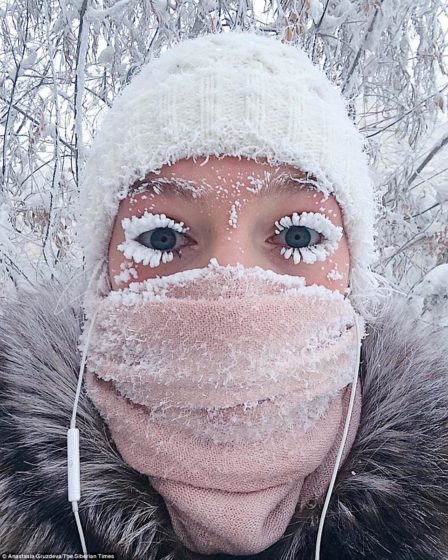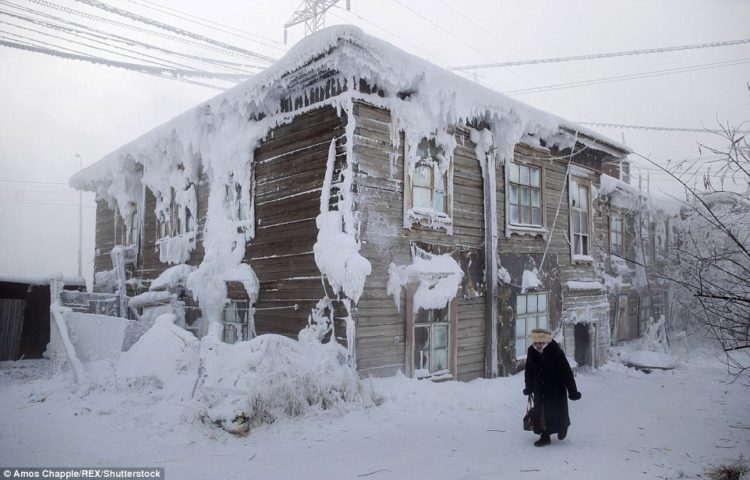The world’s coldest village Oymyakon located in the Siberian outpost reaches near-record cold temperatures as the thermometer breaks after recording minus 62C.
This is the coldest village on earth where the average temperature in January is -50C and the inhabitant’s eyelashes freeze solid mere moments after stepping outside. The remote Siberian village is the coldest permanently inhabited settlement in the world.
It was so icy in the Russian village that a new electronic thermometer conked out after recording a bone-cracking minus 62C. The official weather station at the ‘pole of cold’ registered minus 59C, but locals said they are readings were as low as minus 67C – less than 1C off the lowest accepted temperature for a permanent settlement anywhere in the world. And that record-breaking recording was taken in the town back in 1933.
One villager in Oymyakon recorded a temperature of minus 67C, while others agreed that the official reading of minus 59C did not tell the full story. In 1933, a temperature of minus 67.7C was recorded in Oymyakon, accepted as the lowest ever in the Northern Hemisphere. Lower temperatures are recorded in Antarctica, but here there are no permanently inhabited settlements.
The digital thermometer was installed last year to help Oymyakon market itself to tourists, but it gave up the ghost at minus 62C. It broke because it was too cold. The village is home to around 500 hardy people and in the 1920s and 1930s was a stopover for reindeer herders who would water their flocks from the thermal spring.
This is how the town got its name which translates as ‘the water that doesn’t freeze. The Soviet government later made the site a permanent settlement during a drive to force its nomadic population into putting down roots.
The people daily problems that come with living in Oymyakon include pen ink freezing, glasses freezing to people’s faces, and batteries losing power. Locals are said to leave their cars running all day for fear of not being able to restart them. Rock-solid earth makes burying the dead a difficult task.
The earth must first have thawed adequately in order to dig, so a bonfire is lit for a few hours. Hot coals are then pushed to the side and a hole just a few inches deep is dug.
The process is repeated for a number of days until the hole is deep enough to bury the coffin. However, in summer the town can get up to 21 hours of light and temperatures can rise to an average of 73 degrees Fahrenheit in July.
Read More: World’s Most Stunning Glacier Waterfall in Svalbard
Source: Daily Mail







